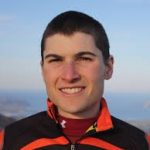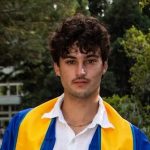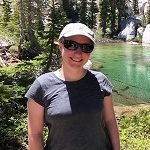 Robert Cooper completed his PhD and postdoc in the Shaffer lab, and moved in 2025 to start an assistant professorship in the Fish and Wildlife Conservation Department at Virginia Tech. He uses genomic and computational tools to advance conservation biology of threatened species, uncovering how human disturbance, including invasive species, habitat destruction, and climate change, affects population health, structure, and movement across landscapes. His research also explores the novel environmental pressures (e.g. temperature, desiccation, and disease) that result from anthropogenic changes and how they impact threatened and endangered species. In the Shaffer Lab, Robert primarily focused on western reptiles and amphibians, particularly the California tiger salamander which faces threats from habitat loss, fragmentation, drought, and hybridization with non-native salamanders. This work incorporated range-wide genomic surveys, field-based hydroperiod manipulative experiments, molecular thermal tolerance assays, and genetic rescue projects to enhance the conservation of this endemic amphibian. |
 Dave Daversa is interested in optimizing landscape connectivity for endangered species threatened by disease. In collaboration with the National Park Service, he is working on better understanding movement and infection risk in endangered Yosemite toads, with the goal of developing data-driven re-introduction strategies to strengthen their vulnerable populations. Dave received his PhD in 2016 from the University of Cambridge, and then went on to do postdocs at the Institute for Integrative Biology, University of Liverpool and the National Great Rivers Research and Education Center in Alton, Illinois. |
 Zachary MacDonald finished his postdoc in the Shaffer lab in 2025, and moved to the Inland Empire as an assistant professor of Entomology at UC Riverside. Zac is broadly interested in ecological and evolutionary mechanisms that structure biodiversity in space and time. Throughout his Ph.D. at the University of Alberta, much of Zac’s work focused on conservation applications of theoretical ecology, evaluating relationships between habitat loss, habitat fragmentation, and emergent patterns of species diversity. As a La Kretz Center Postdoctoral Fellow in the Shaffer Lab, Zac expanded his work into landscape and conservation genomics threatened and in a suite of California and Canadian butterfly species, including local endemics and wide-ranging western North American taxa to better inform conservation practice. |
 Ben Thompsky joined the Shaffer Lab in February of 2024, where he has been working on the California Tiger Salamander genomics projects. Ben is a recent graduate from the UC Santa Cruz Biomolecular Engineering program. He is interested in conservation genomics and particularly de-extinction through genetic engineering. He hopes to further these goals by studying genetic rescue and creating new genetic tools for improved DNA synthesis and large scale editing technology. |
 Erin Toffelmier uses genomic tools to understand how the environment and landscape features interact and lead to species distributional patterns and the process of speciation in natural systems. Her primary study system is the alligator lizard genus Elgaria, where she is studying diversification at levels from recent speciation through phylogeography to local, population-level analyses. Erin is also dedicated to conservation-based research, and her work on metapopulation dynamics in critically endangered Santa Barbara tiger salamanders and isolated populations of threatened Panamint alligator lizards is helping manage both. After receiving her PhD from UCLA in 2019, Erin is now Associate Director of the California Conservation Genomics Project. |
